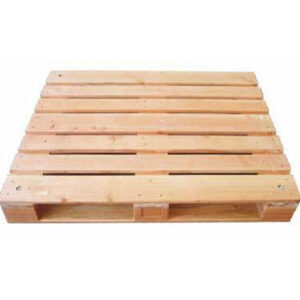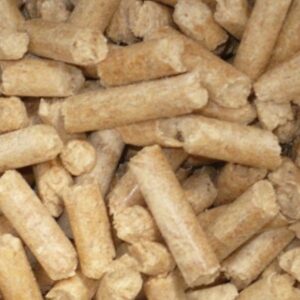Wood Pellets for Heating: A Comprehensive Guide
Introduction to Wood Pellets for Heating
As energy costs rise and environmental concerns grow, many homeowners and businesses are turning to wood pellets for heating as a sustainable and cost-effective alternative. Wood pellets are an eco-friendly fuel source made from compressed sawdust and other wood waste materials. They provide efficient, clean-burning heat for homes, businesses, and industrial applications. In this guide, we will explore the benefits, types, and factors to consider when choosing wood pellets for heating.
Why Choose Wood Pellets for Heating?
1. Environmentally Friendly
Using wood pellets for heating reduces carbon emissions compared to fossil fuels. They are made from renewable resources, ensuring sustainability.
2. Cost-Effective
Wood pellets offer a cost-efficient heating solution, especially when purchased in bulk. They have a high energy output per unit, making them a valuable investment for long-term heating needs.
3. High Efficiency
Modern pellet stoves and boilers are designed for maximum efficiency, ensuring minimal waste and optimal heat output.
4. Consistent Heat Output
Wood pellets burn at a steady rate, providing consistent and reliable heating for residential and commercial spaces.
Types of Wood Pellets for Heating
1. Hardwood Pellets
- Made from hardwood sources like oak and maple.
- Burn longer with a steady heat output.
- Produce minimal ash and require less frequent cleaning.
2. Softwood Pellets
- Made from softwood sources such as pine and fir.
- Higher BTU (British Thermal Unit) output due to natural resins.
- Burn cleaner with lower emissions.
3. Blended Pellets
- A mix of hardwood and softwood.
- Balances efficiency and affordability.
- Offers moderate heat output and low ash production.
Factors to Consider When Choosing Wood Pellets for Heating
1. Pellet Quality
High-quality wood pellets have low moisture and ash content, ensuring efficient combustion and minimal stove maintenance.
2. BTU Rating
The higher the BTU rating, the more heat a pellet can generate. Softwood pellets typically have higher BTU ratings compared to hardwood varieties.
3. Ash Content
Low-ash pellets reduce stove and boiler maintenance, making them a preferred choice for many users.
4. Availability and Delivery Options
Choosing a reliable supplier ensures you have a steady supply of pellets throughout the heating season. Some suppliers offer bulk delivery for added convenience.
Best Brands of Wood Pellets for Heating
1. Okanagan Douglas Fir Pellets
- Premium softwood pellets with low ash content.
- High heat output (~8,800 BTUs per pound).
2. La Crete Wood Pellets
- Softwood pellets with high efficiency.
- Minimal ash production.
3. Lignetics Wood Pellets
- Available in hardwood and softwood options.
- Low moisture and high heat output.
4. Vermont Wood Pellets
- Sustainably sourced and environmentally friendly.
- Consistent burn rate with minimal waste.
Storage Tips for Wood Pellets
To maintain the quality of your wood pellets for heating, proper storage is essential:
- Keep pellets in a dry, cool area to prevent moisture absorption.
- Store in sealed bags or airtight containers.
- Avoid placing pellets directly on concrete floors to prevent condensation damage.
Description
Wood Pellets for Heating: A Comprehensive Guide
Introduction to Wood Pellets for Heating
As energy costs rise and environmental concerns grow, many homeowners and businesses are turning to wood pellets for heating as a sustainable and cost-effective alternative. Wood pellets are an eco-friendly fuel source made from compressed sawdust and other wood waste materials. They provide efficient, clean-burning heat for homes, businesses, and industrial applications. In this guide, we will explore the benefits, types, and factors to consider when choosing wood pellets for heating.
Why Choose Wood Pellets for Heating?
1. Environmentally Friendly
Using wood pellets for heating reduces carbon emissions compared to fossil fuels. They are made from renewable resources, ensuring sustainability.
2. Cost-Effective
Wood pellets offer a cost-efficient heating solution, especially when purchased in bulk. They have a high energy output per unit, making them a valuable investment for long-term heating needs.
3. High Efficiency
Modern pellet stoves and boilers are designed for maximum efficiency, ensuring minimal waste and optimal heat output.
4. Consistent Heat Output
Wood pellets burn at a steady rate, providing consistent and reliable heating for residential and commercial spaces.
Types of Wood Pellets for Heating
1. Hardwood Pellets
- Made from hardwood sources like oak and maple.
- Burn longer with a steady heat output.
- Produce minimal ash and require less frequent cleaning.
2. Softwood Pellets
- Made from softwood sources such as pine and fir.
- Higher BTU (British Thermal Unit) output due to natural resins.
- Burn cleaner with lower emissions.
3. Blended Pellets
- A mix of hardwood and softwood.
- Balances efficiency and affordability.
- Offers moderate heat output and low ash production.
Factors to Consider When Choosing Wood Pellets for Heating
1. Pellet Quality
High-quality wood pellets have low moisture and ash content, ensuring efficient combustion and minimal stove maintenance.
2. BTU Rating
The higher the BTU rating, the more heat a pellet can generate. Softwood pellets typically have higher BTU ratings compared to hardwood varieties.
3. Ash Content
Low-ash pellets reduce stove and boiler maintenance, making them a preferred choice for many users.
4. Availability and Delivery Options
Choosing a reliable supplier ensures you have a steady supply of pellets throughout the heating season. Some suppliers offer bulk delivery for added convenience.
Best Brands of Wood Pellets for Heating
1. Okanagan Douglas Fir Pellets
- Premium softwood pellets with low ash content.
- High heat output (~8,800 BTUs per pound).
2. La Crete Wood Pellets
- Softwood pellets with high efficiency.
- Minimal ash production.
3. Lignetics Wood Pellets
- Available in hardwood and softwood options.
- Low moisture and high heat output.
4. Vermont Wood Pellets
- Sustainably sourced and environmentally friendly.
- Consistent burn rate with minimal waste.
Storage Tips for Wood Pellets
To maintain the quality of your wood pellets for heating, proper storage is essential:
- Keep pellets in a dry, cool area to prevent moisture absorption.
- Store in sealed bags or airtight containers.
- Avoid placing pellets directly on concrete floors to prevent condensation damage.










